Will Claude 3 Seizes The AI Throne?
Claude 3 takes the lead by preemptively challenging GPT-5

What is Claude 3
Anthropic launches Claude 3, claiming to outperform GPT-4 across the board. Today marks the debut of the Claude 3 model family, setting new standards across a wide array of cognitive tasks.
This lineup includes three top-tier models
- Claude 3 Haiku
- Claude 3 Sonnet
- Claude 3 Opus
each boasting increased capabilities. With each model upgrade, users gain enhanced performance, enabling them to tailor their selection to achieve the optimal blend of intelligence, speed, and affordability for their specific needs.
According to Anthropic, Opus and Sonnet are now available to use in claude.ai and the Claude API which is now generally available in 159 countries. Haiku will be available soon.
If you’re already subscribed to Claude Pro, you can now access the powerhouse model, Claude 3 Opus, for maximum performance! Sonnet is also available via Amazon Bedrock and Google Cloud’s Vertex AI Model Garden. Following suit, Opus and Haiku will soon be available on these platforms as well. Meanwhile, to introduce their three models, Anthropic released a comprehensive 42-page technical report in one go (https://www-cdn.anthropic.com/de8ba9b01c9ab7cbabf5c33b80b7bbc618857627/Model_Card_Claude_3.pdf).
Claude 3 Opus
Opus, the most advanced model in the Claude 3 series, has taken the crown as the world’s most powerful LLM (Large Language Model). Across various commonly used AI evaluation metrics, including undergraduate-level proficiency (MMLU), graduate-level expert reasoning (GPQA), and basic mathematics (GSM8K), Opus has demonstrated leading LLM performance in the industry.
Particularly noteworthy is Opus’s near-human-level comprehension and expression abilities when tackling complex tasks, establishing itself as a frontrunner in the AGI (Artificial General Intelligence) domain. The Claude 3 series models have made significant advancements in tasks such as analyzing predictions, generating nuanced content, code generation, and communicating in languages other than English, such as Spanish, Japanese, and French.
For instance, practicing conversations with Claude 3 to learn Spanish.
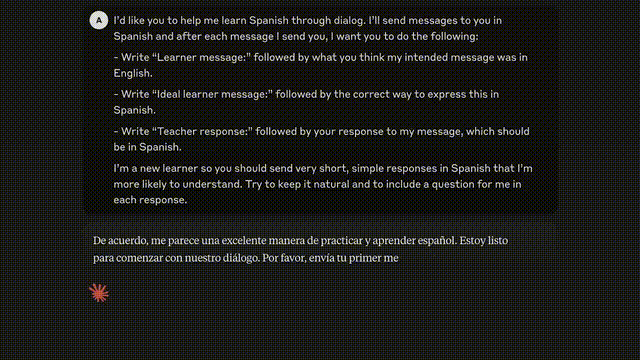
Below is a comparison of the Claude 3 series models with peers across multiple ability assessment benchmarks. It’s evident that the performance of the Claude 3 Opus model completely outshines that of GPT-4 and Gemini 1.0 Ultra. Claude 3 Sonnet surpasses GPT-4 on certain benchmarks like GSM8K and MATH. Claude 3 Haiku can compete with Gemini 1.0 Pro.
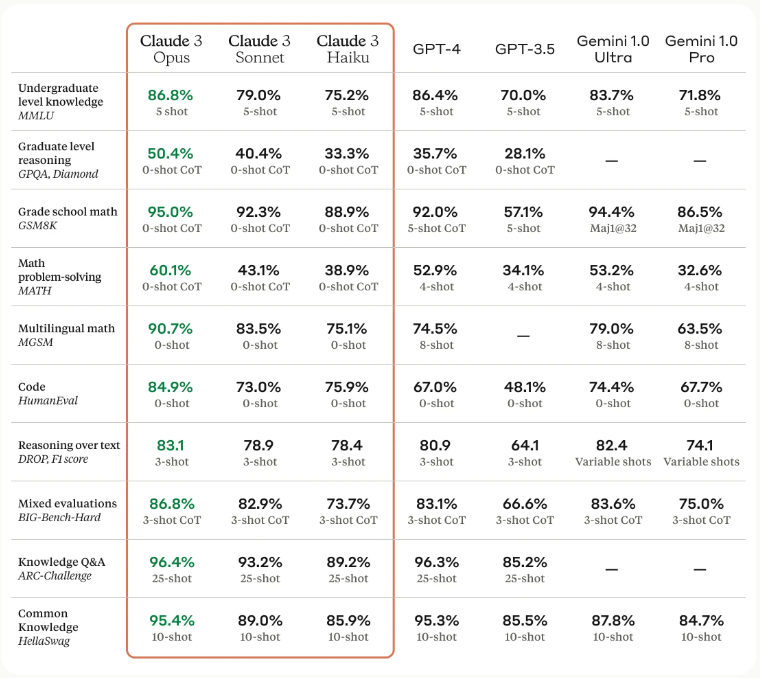
Moreover, Claude 3 Opus achieves comparable or even superior results to GPT-4 in various exams such as LSAT, MBE, high school math competitions like AMC, and GRE. As the following table shows:
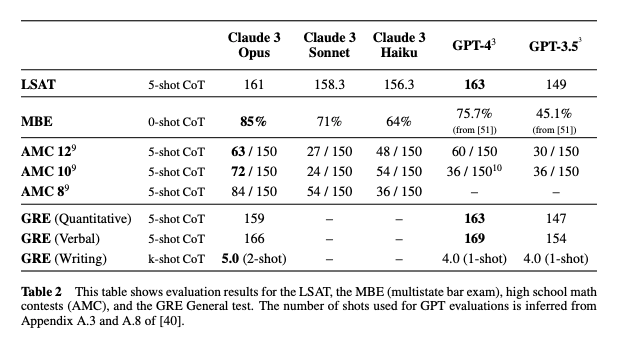
Opus demonstrates the utmost fluency and human-like understanding in handling open-ended questions and novel scenarios, showcasing the limitless potential of generative artificial intelligence.
- Input: $15 per million tokens
- Output: $75 per million tokens
- Context Length: 200K
Applications
- Task Automation: Capable of planning and implementing complex actions between APIs and databases, supporting interactive programming.
- Research and Development (R&D): Used for organizing research data, stimulating creative thinking, building hypotheses, and exploring new drugs.
- Strategy and Planning: Suitable for in-depth analysis of charts, financial reports, market trends, and conducting predictive analytics.
Advantages
Claude 3 Opus boasts an unmatched level of intelligence that surpasses any other model currently available on the market.
Claude 3 Sonnet
Sonnet strikes the perfect balance between processing speed and computational efficiency, which is crucial for enterprise-level task handling. Compared to similar products on the market, it not only delivers superior performance at a lower cost but also excels in long-term operation for large-scale AI systems. In essence, Claude 3 Sonnet is designed for AI projects aiming for efficiency and sustained stability.
- Input: $3 per million tokens
- Output: $15 per million tokens
- Context Length: 200K
Applications
- Data Processing: Enables rapid retrieval within massive knowledge bases or utilizes RAG (Retrieval-Augmented Generation) technology for data retrieval and processing.
- Sales Domain: Includes product recommendations, sales forecasting, and targeted marketing strategies.
- Efficient Tasks: Such as code generation, quality control, and extracting text from images, aimed at saving valuable time.
Advantages
Compared to models with similar intelligence levels, Claude 3 Sonnet is more cost-effective, making it particularly suitable for large-scale deployment scenarios.
Claude 3 Haiku
Haiku stands out as Anthropic’s fastest and most compact model, capable of near-instantaneous responses. With Haiku, users can create incredibly smooth AI experiences, akin to interacting with a real person.
- Input: $0.15 per million tokens
- Output: $1.25 per million tokens
- Context Length: 200K
Applications
- Customer Service: Provides instant and accurate customer support and translation services.
- Content Management: Identifies potential risk behaviors or customer needs.
- Cost Reduction: Optimizes logistics and inventory management, extracting valuable information from unstructured data.
Advantages
Compared to models of similar capabilities, Claude 3 Haiku offers significant advantages in performance, response speed, and cost-effectiveness.
Other Advantages
Reading 10k Token In 3 Seconds
The Claude 3 series models support real-time user interaction, automatic completion, and data extraction tasks (requiring immediate and real-time feedback). Among similar intelligent models, Haiku stands out in the market for its exceptional speed and cost-effectiveness.
In less than 3 seconds, Haiku can read information and data-intensive research papers containing charts and graphics (approximately 10k tokens). The following figure illustrates the loss of Claude 3 Haiku on long-context data spanning up to 1 million tokens.
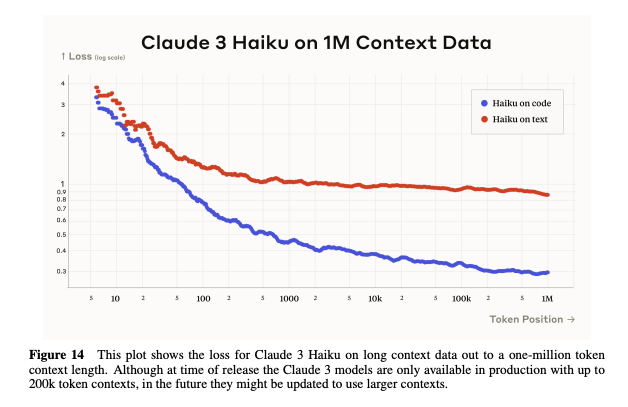
Anthropic anticipates further optimization of the models’ performance after their release. For most tasks, Sonnet processes at twice the speed of Claude 2 and Claude 2.1 while exhibiting higher intelligence. It excels particularly in tasks requiring quick responses, such as knowledge retrieval or sales automation. Although Opus matches the speed of Claude 2 and 2.1, its intelligence level has significantly improved.
Multimodal Visual Capabilities
Additionally, it’s worth noting that the Claude 3 series models possess advanced visual recognition capabilities comparable to other leading models. They can handle various visual formats, including photos, charts, diagrams, and technical drawings.
As evident from the benchmark tests below, the Claude 3 series models outperform the state-of-the-art (SOTA) in certain visual capabilities.

Anthropic claims that up to 50% of knowledge repositories in enterprise clients are stored in various formats such as PDFs, flowcharts, or presentations.
The ability of Claude 3 Opus to combine chart comprehension with multi-step reasoning. For example, we can request Claude 3 Opus to convert a difficult-to-read handwritten photo into text and rewrites the text in “table format” to JSON format.

The Claude 3 model can also visually recognize objects and engage in complex reasoning. For example, understanding the appearance of objects and their relationship to mathematical concepts.
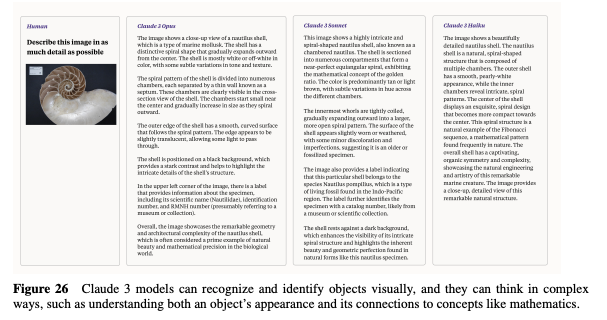
Doubling Accuracy for Complex Problems
Since the model will be used by enterprises of different scales, ensuring high accuracy in model output is crucial. Therefore, Anthropic’s researchers conducted evaluations of complex real-world problems based on the known weaknesses of the model.
They categorized the model’s responses into three types: correct, incorrect, and uncertain. Uncertainty indicates that the model doesn’t know the answer rather than providing an incorrect one.
Compared to Claude 2.1, Opus shows a doubling improvement in accuracy on complex open-ended questions, with significantly fewer incorrect answers. Additionally, in the future, the Claude 3 model will introduce a “citation feature” — the ability to directly reference specific sentences in reference materials to validate answers.
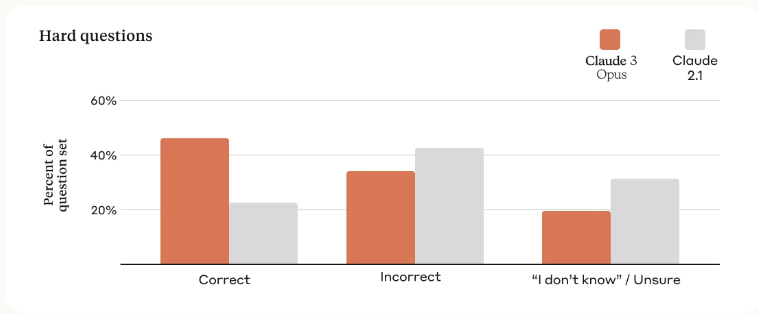
200K Context and Near-perfect Recall
All three models in the Claude 3 series will support a context window of at least 200,000 tokens. Moreover, these models can handle inputs exceeding 1 million tokens, with Anthropic considering opening this feature for specific clients requiring larger context windows.
In the “Needle in a Haystack” (NIAH) test with a 200K token window, Claude 3 Opus achieves an accuracy of over 99%. It can even identify limitations within the test itself, such as recognizing certain “target” sentences clearly added by humans into the original text at a later stage.
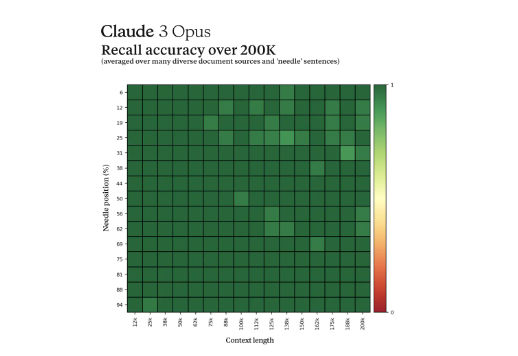
Enhanced Responsibility and Security
In this iteration, the Claude 3 model series continues to prioritize security. Anthropic has dedicated multiple teams to reduce risks from misinformation, biosecurity misuse, election interference, and other areas. Simultaneously, they are striving to enhance the transparency of model security while mitigating privacy concerns.
Based on the Bias Benchmark Questionnaire (BBQ), Claude 3 exhibits even fewer biases compared to previous models. Following responsible expansion policies, the Claude 3 model is currently at ASL-2 security level.
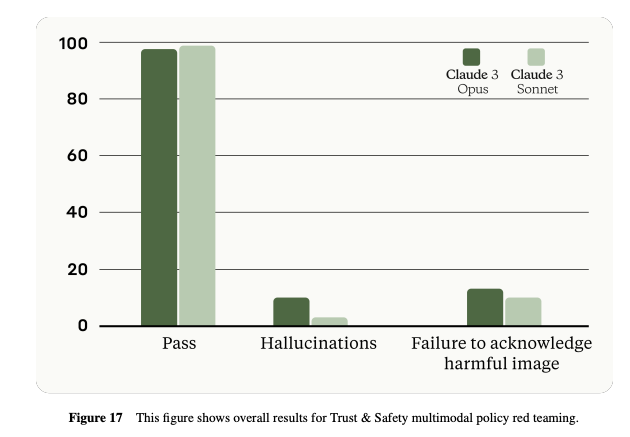
Enhanced Ease of Use
Claude 3 excels in executing complex multi-step instructions, especially when customers require the model to adhere to brand-specific language styles to generate responses, thus creating a trustworthy customer experience.
Moreover, Claude 3 performs exceptionally well in generating popular structured outputs such as JSON. This makes using Claude simpler in applications like natural language classification and sentiment analysis.
Conclusion
In conclusion, Claude 3 represents a significant advancement in AI technology, offering unparalleled performance, enhanced responsibility, and improved usability. With its ability to minimize biases, ensure security, and execute complex instructions while maintaining brand-specific language styles, Claude 3 sets a new standard for AI models.
Its capabilities in generating structured outputs further streamline tasks in various applications, making it an invaluable tool for businesses and researchers alike. Claude 3’s comprehensive features and innovative advancements position it as a frontrunner in the field of artificial intelligence, promising a future of more efficient and trustworthy AI-driven solutions.
